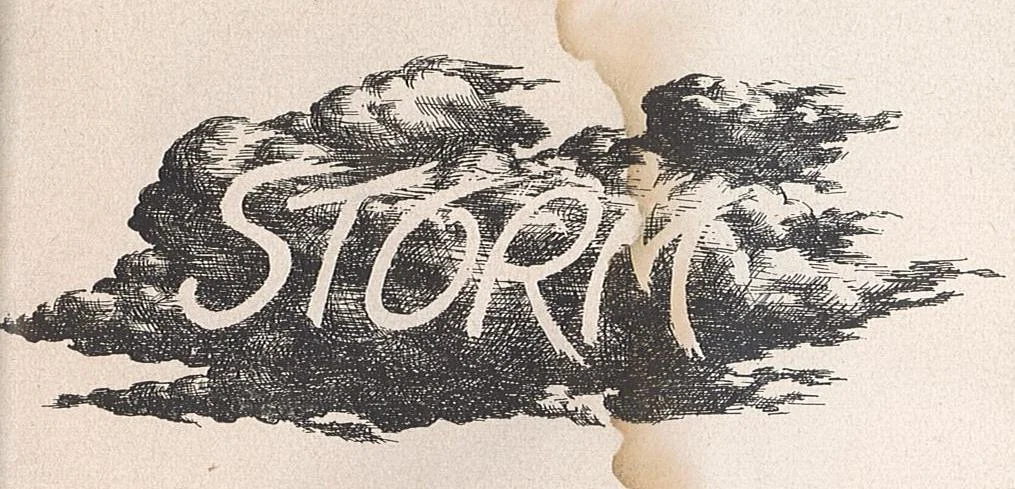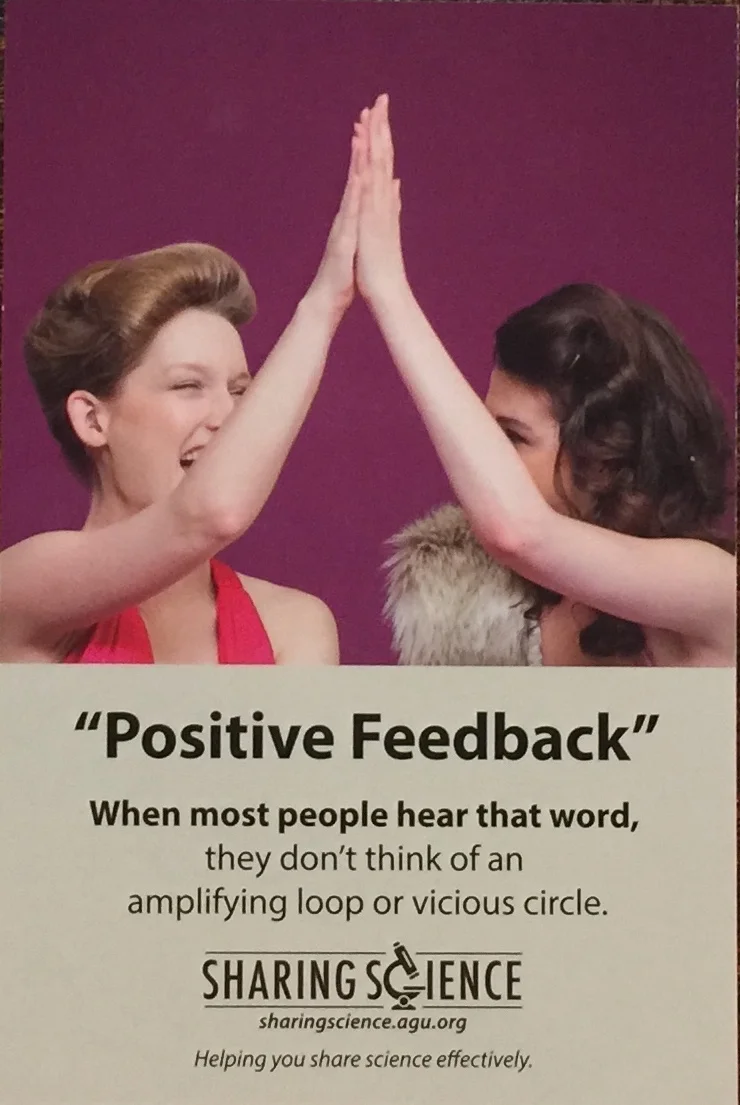'Something Screwy': Hunting The Double Eye Hurricane, 1947
“We were ten miles from the core of the hurricane,” Archie Fields began, “when our radar operator reported on the intercom system that he had picked up ‘something screwy.’” The storm had a double eye, with one forming around the other, like “a spool sitting inside an empty bowl.” Fields believed it was the first time such concentric rings had ever been observed in such a perfectly developed state inside a hurricane.
We now know this phenomenon as “eyewall replacement cycles,” a fairly typical stage in the life cycle of hurricanes. But in 1947, as observing planes were just beginning to penetrate storms, this surprise represented the kind of remarkable discovery made possible by sturdy aircraft equipped with radar. And crews willing to brave hurricanes at 400 feet.
The men and a PB4Y of VPM-3, taken in the Dominican Republic, 1947 or 1948. Archie Fields is in the second row, second from left. Source: Pauline "Polly" Ryner supplied this photo for “Hurricane Hunters,” Wings of Gold (Spring 2005): p. 25, published by the Association of Naval Aviation. Digitally republished at: http://www.vpnavy.com/vpm3_history.html
In September 1947, Archibald R. Fields was military aerologist flying with VPM-3, a Navy weather reconnaissance squadron flying out of Florida and Puerto Rico. He rode into storms aboard PB4Y Privateers, a four-engine long range patrol bomber related to the B-24 Liberators that bombed Germany during World War II. The planes had reinforced tails and carried instruments to measure temperature, pressure and wind speeds. To get data as close as possible to the surface, the planes routinely flew at 400 feet. As a trained meteorologist, Fields guided the plane into the most meteorologically important parts of the storm, took observations, and made sense of the data when the flight retuned.
In our age of geostationary satellites, we take for granted precise knowledge about where a storm is. But as Fields was returning from his flight through the double eyewall, Grady Norton of the Federal Hurricane Warning Service reported a “suspicion” about another hurricane forming near Martinique. According to the Miami Herald,
“The hunt for the second hurricane was started on the basis of reports by ships at sea and the San Juan, Puerto Rico, weather bureau of a suspicious condition a few hundred miles south of the spot where the present Hurricane was first detected.”
VPM-3 made 90 weather flights during the 1947 hurricane season, tracking nine tropical storms of various strength.
At some point later, probably in the early 1950s, Archie Fields received a water-colored cartoon as a going away present from his colleagues. Fields is depicted flying an Navy jet fighter (possibly an F9F Panther or the more obscure F6U Pirate), chasing a JB-2 guided missile, a US copy of the German V-1 buzz bomb. This must be in reference to the Naval Air Station and test range at Point Mugu, California, where the Navy developed missiles. The JB-2 “Loon” was the Navy’s first submarine launched cruise missile, and appeared in the 1950 movie The Flying Missile.
There are some noteworthy signatures on the artwork. Howard T. Orville was the head of Navy Aerology, and later an advisor to President Eisenhower on weather control research. Florence van Straten analyzed the interaction between meteorology and naval tactics during World War II, and then studied the upper atmosphere as part of the development of long-range missiles for the Navy.
Finally, you can’t leave without learning about Point Mugu’s most ridiculous event: the Battle of Palmdale. In 1956, a leftover World War II fighter converted into a drone was supposed to meet its doom as a air-to-air missile target. But it went rogue and turned towards Los Angeles. The Navy asked a nearby Air Force interceptor squadron to destroy it. Two Air Force F-89s chased the drone across southern California, firing 208 “Mighty-Mouse” rockets. Every shot missed or bounced off. But they exploded when they hit the ground, destroying a utility truck, spraying shrapnel into Edna Carson’s kitchen cabinets, and starting two days of wildland fires that scorched more than 1000 acres. The drone flew on undisturbed. It ran out of gas near Palmdale, finally spiraling down on to electrical lines along a deserted stretch of highway.
Image Sources
The Men of VPM-3. Pauline "Polly" Ryner supplied this photo for “Hurricane Hunters,” Wings of Gold (Spring 2005): p. 25, published by the Association of Naval Aviation. Digitally republished at: http://www.vpnavy.com/vpm3_history.html
The rest of the pictures scanned here came from a collection of documents once owned by Archibald R. Fields, now in the personal collection of Roger Turner. I bought them several years ago through eBay based on a skimpy description from a now forgotten seller. The documents include:
- Newspaper clippings from the Miami Herald, September 14, 15 and 16th, 1947; and the Detroit News, August 18, 1949
- A water-colored illustration of a jet plane chasing a JB-2 flying bomb, signed by US Navy aerologists who may have been involved in missile development
- A photograph of a man (probably Fields) in uniform shaking hands with another officer
An undated and unlabeled photograph found amongst a folder of newspaper clippings about Archibald Fields.
Learn More
- “Weather Squadrons Abolished,” Naval Aviation News (April 1948): p. 34. Reprinted at: U.S. Navy Patrol Squadrons, http://www.vpnavy.com/vpm3_history.html [accessed September 19, 2017].
- “Florence W. van Straten Dies,” Washington Post, March 31, 1992.
- On Hurricane Hunter Flights generally, though not on Fields or VPM-3 specifically, see Bob Sheets and Jack Williams, Hurricane Watch: Forecasting he Deadliest Storms on Earth (Vintage Books, 2001): Ch. 4, “Flying Reconnaissance.”
- Follow me down a Wikipedia hole: Entries on Naval Air Station Point Mugu, the Battle of Palmdale; and The Flying Missile.









